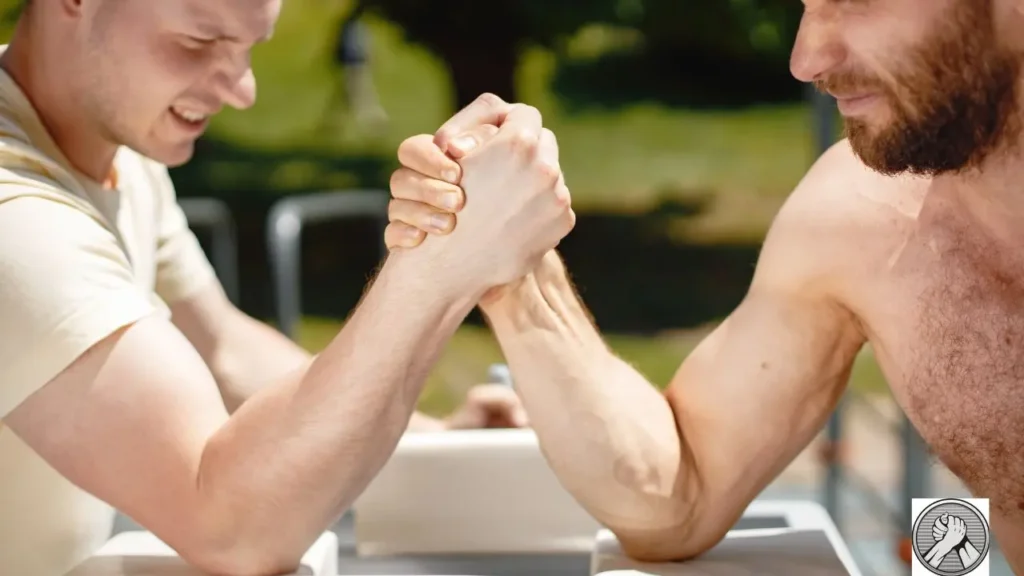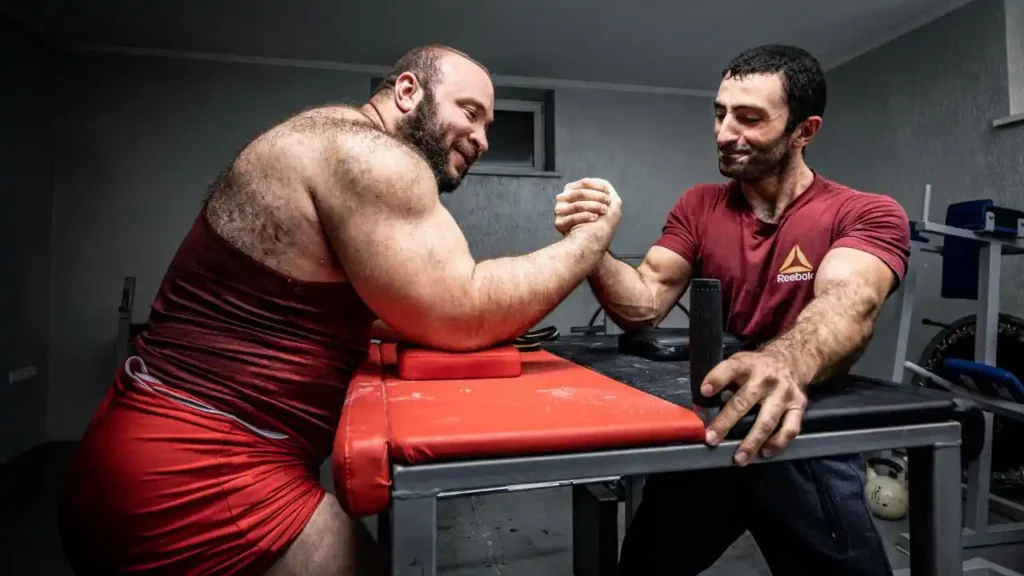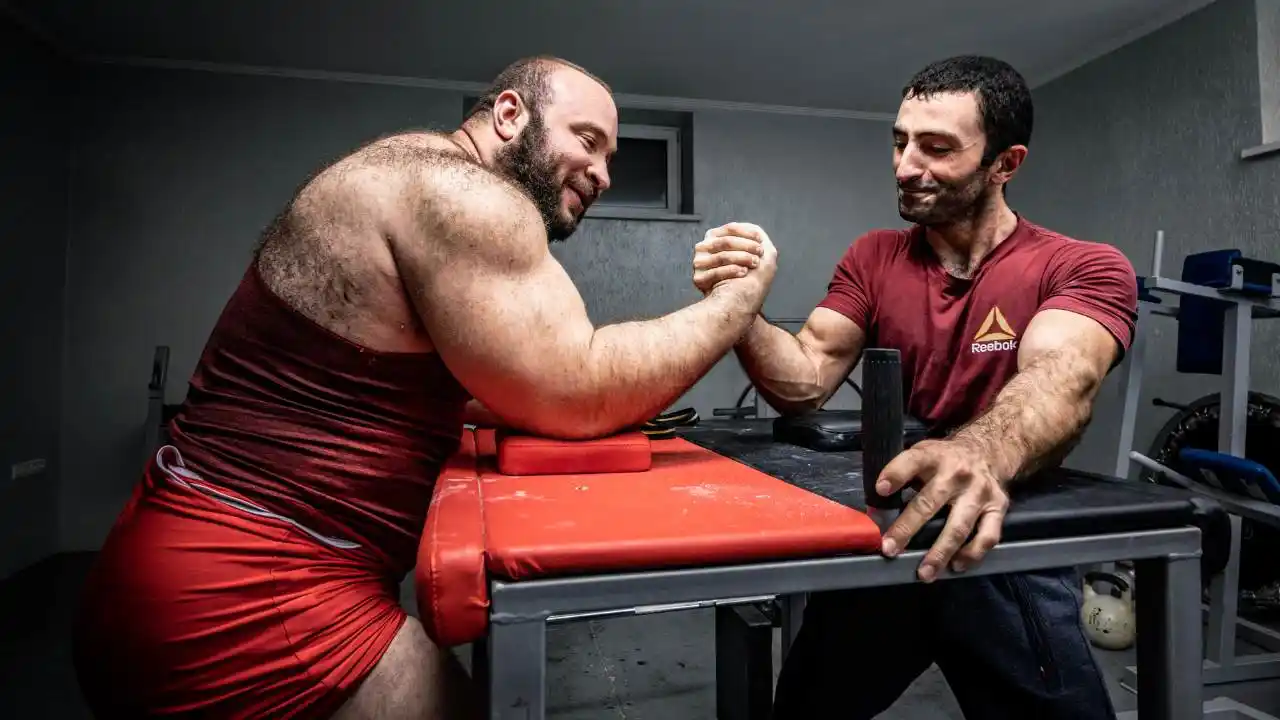Arm wrestling is a sport where two people compete against each other’s strength and endurance. It combines raw strength, skill, and muscle coordination. Arm wrestling may look like a simple test of arm strength, but it actually uses many muscles in the upper body. Knowing these muscles can help you train better and improve your technique.
Contents
Primary Muscles
The primary muscles involved in arm wrestling are those that directly generate the force required to push the opponent’s arm down.

Biceps Brachii: These are the most well-known muscles in the arm. They are on the front of the upper arm and are called the biceps brachii. It is very important for bending the elbow, which is a main move in arm wrestling.
Brachialis: This muscle is located under the biceps and supports bending the elbow. It also makes the pull during an arm wrestling match much stronger.
Also Check: Hook Vs Top Roll: Mastering the Techniques of Arm Wrestling
Brachioradialis: These muscles connect the lower part of the humerus (the upper arm bone) to the radius (one of the wrist bones). This muscle helps bend the elbow and works best when the arm is partially bent, which happens a lot in arm wrestling.
Supporting Muscles
While the primary muscles do the bulk of the work, several supporting muscles play crucial roles in stabilizing the arm and providing additional power.

Pronator Teres and Pronator Quadratus: These muscles move the palm of the hand downwards, which is called pronation. They help keep the arm and wrist from rotating, which is important for staying in a good position.
Flexor Carpi Radialis and Flexor Carpi Ulnaris: These muscles, found in the forearm, flex the wrist. A strong wrist flexion can improve leverage and control during an arm wrestling bout.
Triceps Brachii: The triceps are mostly used for pushing, but they also help keep the arm stable and can apply backward pressure when needed.
Stabilizing Muscles
Stability is essential in arm wrestling, as an unstable arm can easily lose position and power.
Deltoids: These shoulder muscles stabilize the arm during the match. The anterior deltoid, in particular, helps maintain the arm’s position and contributes to the overall force application.
Rotator Cuff Muscles: These muscles (supraspinatus, infraspinatus, teres minor, and subscapularis) are crucial for shoulder stability, helping to keep the upper arm bone securely in its socket.
Core and Back Muscles
A strong core and back are essential for generating power and maintaining stability.
- Latissimus Dorsi: This large back muscle assists in pulling motions and is highly engaged during arm wrestling, providing additional power and stability.
- Rectus Abdominis and Obliques: These core muscles help maintain a solid base and transfer power from the lower body to the upper body.
- Erector Spinae: These muscles run along the spine and help maintain posture and stability during the intense exertions of arm wrestling.
Training for Arm Wrestling
Since many different muscles are used in arm wrestling, your training should include exercises that work on both the main muscles and the supporting ones. Here are some good exercises to try:
- Bicep Curls and Hammer Curls: To strengthen the biceps and brachialis.
- Wrist Curls and Reverse Wrist Curls: To build the forearm flexors and extensors.
- Pronator and Supinator Exercises: Using a dumbbell or resistance band to strengthen the muscles involved in forearm rotation.
- Pull-Ups and Rows: To develop the latissimus dorsi and other back muscles.
- Core Exercises: Such as planks, leg raises, and Russian twists to build core stability.
Conclusion
Arm wrestling is a tricky sport that needs many muscles to work together. The biceps and brachialis in your upper arm, along with the muscles in your shoulders and core, all play important roles in making strong and controlled moves. Knowing which muscles are involved can help you get better at the sport and avoid injuries, so you can compete safely and effectively.

